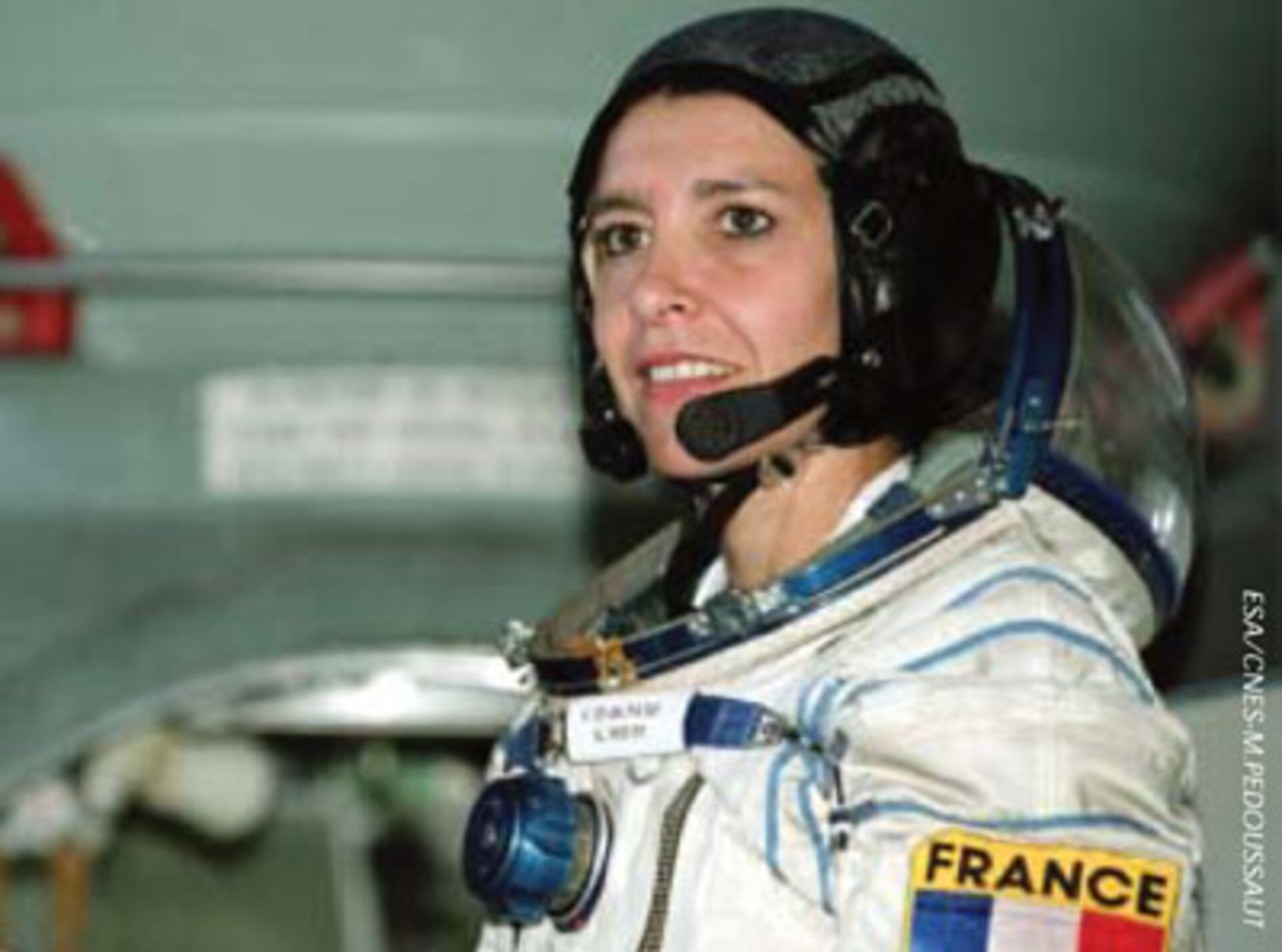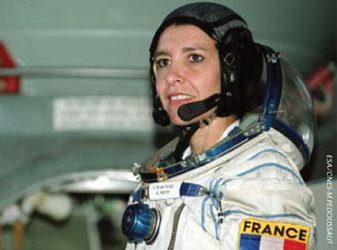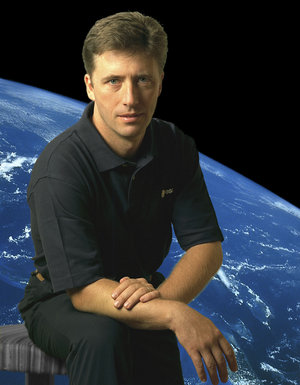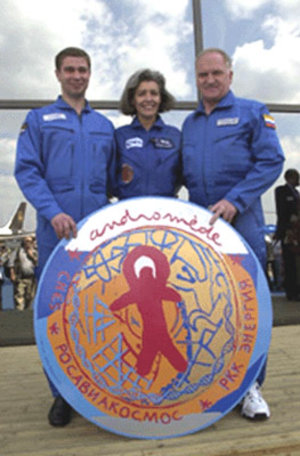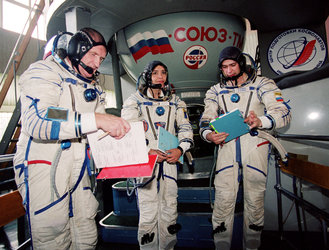Europe’s first woman heads for ISS on CNES-led flight
The Andromède ‘taxi’ flight to the Space Station is being undertaken under a French-Russian agreement between the French space agency CNES, the Russian space agency Rosaviakosmos and the company RSC Energia. It will be the second exchange of a Soyuz spacecraft, which currently serves as the main rescue vehicle for the Space Station crew in case of an onboard emergency.
The flight has two main objectives – the first to exchange the Station’s Soyuz ‘lifeboat’, a task which is done every six months, and the second to carry out a series of scientific and technical experiments on behalf of CNES, ESA (European Space Agency) and DLR (German Aerospace Centre), which Claudie Haigneré will conduct upon reaching the Station.
ESA astronaut Claudie Haigneré, of French nationality, will become Europe’s first woman to visit the International Space Station this autumn and experience life and work on the largest habitable man-made structure in space.
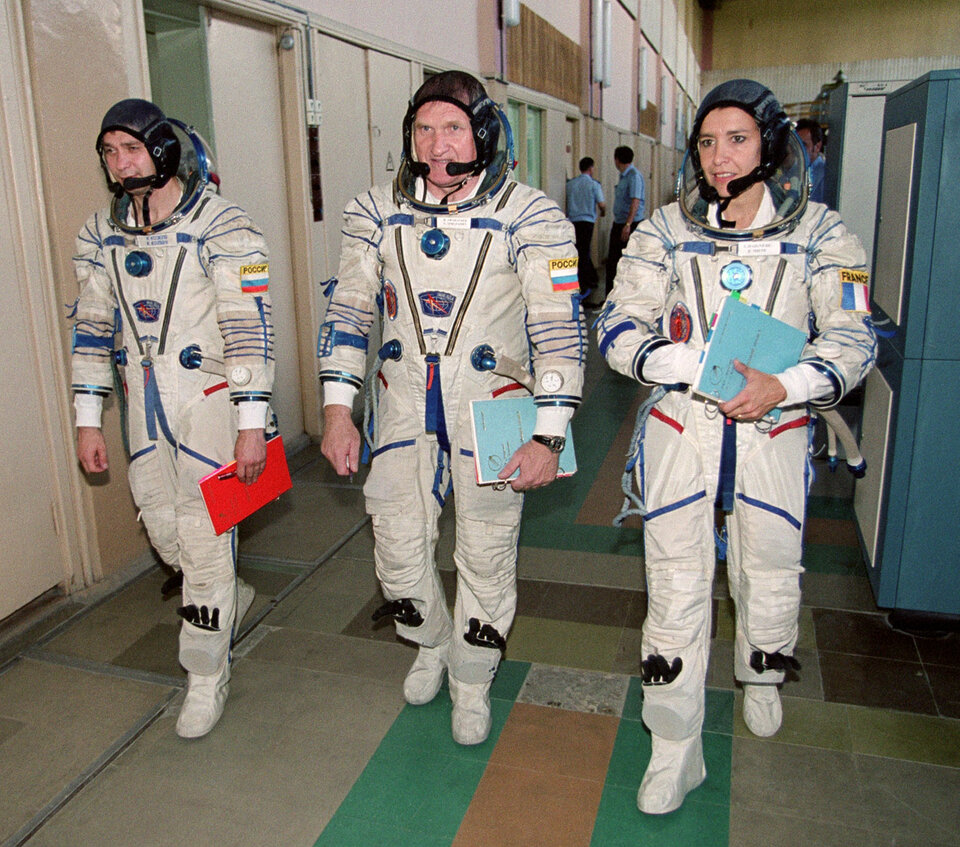
Together with cosmonauts Victor Afanassiev and Konstantin Kozeev, Claudie will blast off on a Russian Soyuz rocket from Baikonur in Kazakhstan for a 10 day mission. They will stay on the International Space Station for eight days working alongside the resident crew – Station commander Frank Culbertson, Soyuz commander Vladimir Dezhurov and flight engineer Mikhail Tyurin – who arrived in late August.
Claudie will fly in the left seat of the vehicle as the first non-Russian woman astronaut to be assigned as Soyuz flight engineer throughout all phases of the Andromède mission. After reaching the Space Station in orbit two days after launch, their spacecraft will perform an automatic approach and docking.
The crew will return to Earth aboard the Soyuz lifeboat currently at the Station which, after six months in orbit, is now approaching its ‘best before’ date.
During the eight days on board the Space Station experiments in life sciences, biology, materials science and Earth observation will be carried out. Some will involve the direct participation of children and students at various schools and colleges in France and Germany.
The Andromède mission will be Claudie’s second space flight. In 1996 she went to the Mir space station as a member of the Russian-French Cassiopée mission crew.


